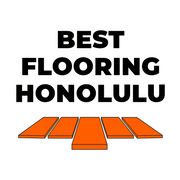Subfloor leveling
Subfloor leveling is an important part of any flooring installation. Most flooring materials including but not limited to luxury vinyl plank flooring, laminate, hardwood, tile, and others require subfloor to be leveled. It’s a manufacturer’s requirement and ignoring it can void the manufacturer’s warranty. Most flooring materials require subfloor to be leveled up to 1/8 of an inch every 6 feet.
- If you don’t level the subfloor before installing click-in flooring like luxury vinyl plank flooring your flooring can open over time. Also, with an unleveled subfloor some types of locks, for example, 5g, won’t lock at all and will stick up.
- If you don’t level the subfloor before laminate and hardwood installation your floor can start to make a squeaking noise when you step on it. Over time this will cause laminate and hardwood to open.
- If you don’t level the subfloor before tile installation, you will be forced to level the subfloor with thinset mortar. This will dramatically increase installation costs. Or if you don’t do leveling at all your tile will be uneven and can have bumps.
Please, notice:
- At Best Flooring Honolulu, we offer subfloor leveling only as a part of flooring installation. We offer 3 types of leveling.
- Removing leftovers of thinset mortar from old tile, or glue residue from old glue down flooring is not considered leveling. It’s considered a part of the demolition services and will be charged separately.
Subfloor leveling: Level 0. No leveling.
Some homeowners do subfloor leveling themselves or decided to not do leveling at all. We can install flooring at your choice without doing leveling, only after you sign a waiver. By signing a waiver you lose labor warranty and also you acknowledge that some flooring planks won’t close due to the leveling issues. Also, that soft types of flooring (for example, luxury vinyl plank flooring) can take the shape of the unleveled subfloor over time. Also, you give up all claims to the quality of the installation of the floor that could be caused by the fact that the subfloor was not leveled.
Subfloor leveling: Level 1. Partial leveling.
For this type of leveling currently, we charge $1 per square foot. If you order level 1 leveling you must order it for the whole project.
How do we do it? The installer takes 8 feet long level (or uses a laser level) and checks all installation areas. In case if he finds a bump – he grinds it. In case if he finds a deep – he uses a self leveling concrete compound to level it.
Pros:
- We guarantee that your flooring won’t open over a one-year warranty term
- All flooring locks will be locked properly
- Most deeps and bumps will be leveled
- Cost cheaper than level 2 leveling
- The final price for Level 1 leveling is known before the installation starts.
Cons:
- On some jobs, after installation, you will be able to see waves between baseboard and flooring (this can be fixed by caulking the bottom seam)
- On some jobs, after installation you might find places flooring will “play” (go slightly up and down)
Please, notice, $1 per square feet include 1 bag (50 lbs) of self-leveling compound every 500 square feet.
Level 2. Full float leveling.
For this type of leveling currently, we charge $120 per used bag of self-leveling compound (price includes labor and material). If you order level 2 leveling you must order it for the whole project.
How do we do it? The installer takes 8 feet long level (or uses a laser level) and checks all installation areas. If there is a big bump – grinds it. All concrete subfloor is floated with self leveling concrete compound.
Pros:
- We guarantee that your flooring won’t open over a one-year warranty term
- All flooring locks will be locked properly
- The best leveling you can get on the market
- Most likely Level 2 leveling will take away waves
- Most likely Level 2 leveling will take away places where flooring can “play”
Cons:
- The price of level 2 leveling is 2-5 times higher than level 1 leveling
- Level 2 leveling can’t be performed in some places (wooden subfloor, tight spaces with an excessive amount of furniture, etc.)
- The final amount for Level 2 leveling is known only after the leveling is done.
Please, visit our Instagram page or YouTube channel for more level 1 and level 2 floor leveling photos, video, and information.
